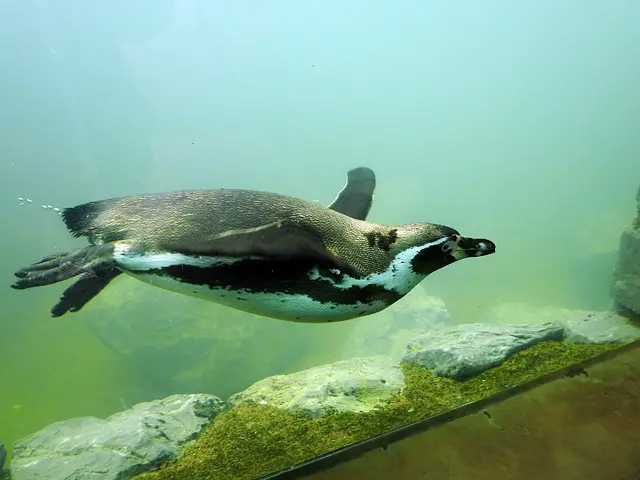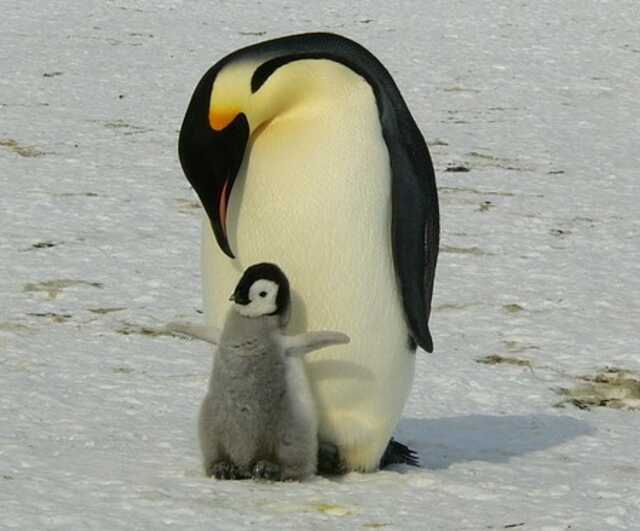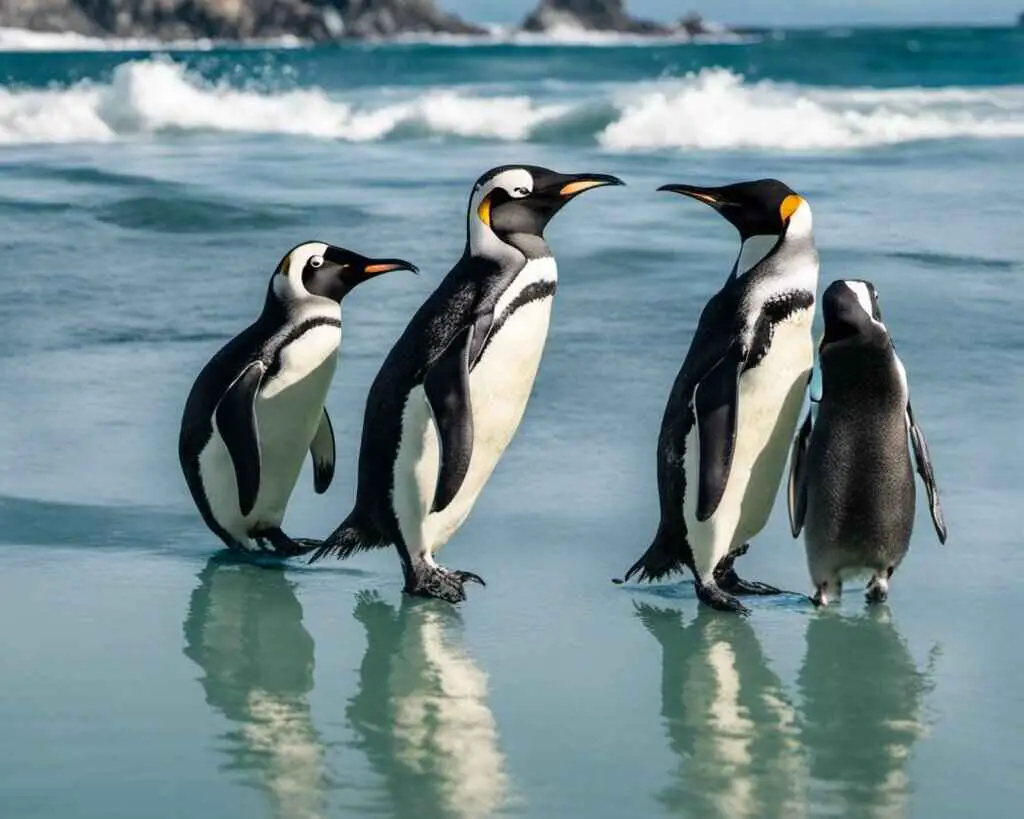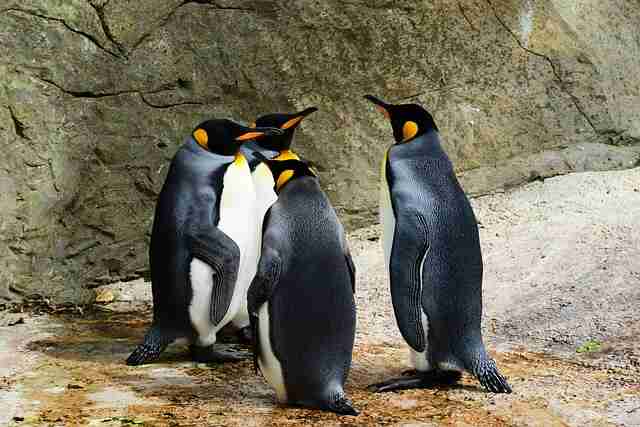Have you ever wondered if penguins are birds? While they certainly share some similarities with our feathered friends, there are some key differences that have led to an ongoing debate about their classification.
Table of Contents
Key Takeaways:
- Penguins have bird-like features but also distinct adaptations for their marine lifestyle
- The ability to fly is a defining characteristic of birds, and penguins have adapted to an aquatic lifestyle
- Penguins are classified within the avian taxonomy system, but some argue that their unique features justify a separate classification
- Regardless of their classification, penguins play a vital role in ecology and face significant conservation challenges
- The debate over whether penguins are birds remains ongoing and continues to fascinate scientists and bird enthusiasts alike

Are Penguins Birds?
Yes, penguins are birds. Despite their inability to fly, penguins possess many bird-like characteristics, such as feathers, wings, and a beak. Penguins are also warm-blooded, lay eggs, and have a four-chambered heart, which are all characteristics of birds.
However, penguins are adapted to living in aquatic environments and have evolved unique adaptations, such as their streamlined bodies and waterproof feathers, to help them swim and dive in the ocean.
What Defines a Bird?
In order to determine if penguins can be classified as birds, we first need to understand the characteristics that define a bird. Birds are typically recognized by their bipedal stance, feathers, beak, and wings. They have lightweight, hollow bones that allow them to fly, and they lay eggs.
Penguins share several of these characteristics with true birds, such as their feathers, beak, and general body shape. However, they lack the ability to fly. Instead, penguins have adapted to a life in the water, where their wings have evolved into flippers that aid in swimming. Additionally, their bones are not hollow but are dense and heavy, allowing them to dive deep underwater.
Despite these differences, penguins possess many bird-like features. They have a keen sense of sight, hearing, and smell, and they use vocalizations to communicate with one another. Penguins also have a remarkable ability to regulate their body temperature, a trait shared by most birds.
Furthermore, like many bird species, penguins exhibit sexual dimorphism, with males and females displaying different physical characteristics. For example, male Emperor Penguins have a distinctive orange patch on their throats, while females do not. This characteristic helps to distinguish the sexes during mating season.
Penguin Biology
Penguins are a unique and fascinating species that have adapted to thrive in some of the harshest environments on Earth. There are 18 species of penguins, all of which are found in the Southern Hemisphere, from the Antarctic continent to the Galapagos Islands.
One of the most notable features of penguins is their distinctive black and white feather pattern, which helps them blend into their surroundings while swimming. Their wings have evolved into flippers, which aid in swimming through the water at incredible speeds. Penguins also have specialized glands that enable them to excrete excess salt, allowing them to survive in saltwater environments.
Each penguin species has adapted to its unique habitat and environment. For example, the Emperor Penguin is the largest and can weigh over 80 pounds, while the Little Blue Penguin is the smallest and only reaches about 16 inches in height. Some species, such as the Galapagos Penguin, have adapted to living in warm, tropical environments.
In addition to their physical adaptations, penguins have also developed unique social behaviors. For example, they form large breeding colonies, with some populations numbering in the hundreds of thousands. Penguins also have a complex communication system that includes vocalizations and body language.
Overall, the biology of penguins is both fascinating and complex. By adapting to their environments, developing unique physical and social characteristics, and forming distinct species, penguins have evolved to become some of the most iconic and beloved creatures on the planet.

Flight Capabilities of Penguins
Penguins are known for their unique ability to swim and dive in marine environments. However, their flight capabilities are minimal compared to other bird species.
While penguins have wings, they have evolved for swimming rather than flying. Their wings are flat and broad, ideal for propelling them through water. In contrast, most birds have wings that are more pointed and designed for gliding and soaring through the air.
Although penguins cannot fly, they do have adaptations that aid their movement in the air. For example, penguins use their wings to “fly” through the water, propelling themselves with a strong swimming stroke. Additionally, penguins use their wings for balance and stability while navigating rough terrain on land or ice.
Overall, while penguins possess some bird-like qualities, their flight capabilities are significantly reduced, making them unique among avian species.
Penguin Classification
Penguins are a group of flightless birds that have captured the imaginations of people worldwide. However, where do these enigmatic birds fit within the larger avian classification system?
At the highest level, birds are classified under the animal kingdom, followed by the phylum chordata, the class aves, and the infraclass neornithes. Penguins are classified under the order Sphenisciformes, meaning “wedge-shaped,” and are the sole family within this order.
| Kingdom | Phylum | Class | Infraclass | Order | Family |
|---|---|---|---|---|---|
| Animalia | Chordata | Aves | Neornithes | Sphenisciformes | Spheniscidae |
Within the family Spheniscidae, there are 18 recognized species of penguins, ranging from the small blue penguin (Eudyptula minor) to the Emperor penguin (Aptenodytes forsteri), which is the largest of all penguin species. These species are further divided into six genera: Aptenodytes, Eudyptes, Eudyptula, Megadyptes, Pygoscelis, and Spheniscus.
Interestingly, even though penguins are a type of bird, they have evolved unique adaptations for their aquatic lifestyle, such as their streamlined bodies and flipper-like wings used for swimming. These adaptations make them markedly different from other avian species, especially those that fly.
In conclusion, penguins represent a unique and fascinating group of birds that are classified under the order Sphenisciformes and the family Spheniscidae. While they share many characteristics with other birds, they have evolved unique adaptations for their aquatic lifestyle, setting them apart from their feathered counterparts.
Penguin Features vs. True Birds
Penguins possess several features that parallel those of true birds, such as their wings and feathers. However, their wings are not suitable for flying but rather act as flippers for swimming through water. Additionally, their feathers are densely packed to provide insulation in frigid temperatures, unlike the streamlined and lightweight feathers of flying birds.
Another bird-like feature of penguins is their beak. Like many birds, penguins have a sharp and curved beak for catching and consuming prey. However, the beak of penguins is adapted to their specific diet of fish and krill, with a hooked tip for gripping slippery prey and serrated edges for efficient consumption.
Despite these similarities, penguins also have distinct adaptations for their marine lifestyle. For instance, their dense bones, which aid in diving, make them too heavy for flight. Additionally, their unique circulatory system allows them to regulate their body temperature while swimming in freezing waters.
In conclusion, while penguins possess several bird-like features, they also have specific adaptations for their aquatic lifestyle. Therefore, while they are classified within the avian family, they are distinct from true birds and have their own unique biological characteristics that set them apart.
The Avian Debate: Are Penguins Birds?
The question of whether penguins can be classified as birds has sparked an ongoing debate among scientists and bird enthusiasts alike. On one hand, penguins possess many bird-like features, such as their feathers, beaks, and ability to lay eggs. On the other hand, they lack the ability to fly and have distinct adaptations for their marine lifestyle.
Proponents of classifying penguins as birds argue that their shared features far outweigh their differences. They point to the fact that penguins belong to the avian order Sphenisciformes and possess many of the same anatomical and genetic characteristics as other birds.
However, critics argue that the lack of flight capabilities is a fundamental characteristic of birds and sets penguins apart from their avian counterparts. Additionally, penguins’ unique adaptations for swimming and diving suggest that they have evolved separately from other birds and may not be considered true birds.
Ultimately, the classification of penguins as birds remains a subject of debate and depends on the criteria used to define a bird. However, what is clear is that penguins play a crucial role in their ecosystems and face numerous conservation challenges.
Penguin Conservation and Importance
Penguins are not only fascinating creatures, but they also play a vital role in their respective ecosystems. There are 18 known species of penguins, all varying in size, habitat, and behaviors. These species are found in various regions of the Southern Hemisphere, from the icy waters of Antarctica to the subtropical islands off the coast of South America and Africa.
Each penguin species is adapted to the unique conditions of its environment, and their survival is essential to maintain the balance of their respective ecosystems. They are significant prey for various marine predators, including seals, orcas, and other birds. In turn, many penguin species feed on krill, fish, and squid, playing a crucial role in maintaining the balance of the marine food chain.
Despite the vital role played by penguins, many species are facing significant conservation challenges. Habitat loss, overfishing, pollution, and climate change are all threats to the survival of penguin populations worldwide. Of the 18 known penguin species, thirteen are classified as either vulnerable, endangered, or critically endangered by the International Union for Conservation of Nature.
Penguin Conservation Efforts
Fortunately, there are numerous conservation efforts worldwide aimed at protecting penguin species. These efforts range from habitat conservation, reducing pollution and plastic waste, to protecting areas from overfishing and mitigating the effects of climate change.
The majority of penguin species are protected under international treaties and agreements, such as the Convention for the Conservation of Antarctic Seals and the Convention on the Conservation of Migratory Species of Wild Animals. These agreements help to regulate human activities in penguin habitats and protect them from further harm.
Penguin research and monitoring programs are also in place to gather critical data to better understand penguin populations’ health and behaviors. This data can then be used to develop and implement more effective conservation strategies.
In conclusion, penguins are not just birds; they are a crucial part of their respective ecosystems and play a vital role in maintaining the balance of the marine food chain. It is our responsibility to protect them from further harm and ensure their survival for future generations to enjoy.
Conclusion
After examining the defining characteristics of birds, penguin biology, flight capabilities, classification, and features compared to true birds, the answer to the question of whether penguins can be classified as birds is not straightforward. While penguins share many bird-like features, such as laying eggs and having feathers, they also possess unique adaptations for their marine lifestyle, such as flipper-like wings and a dense layer of insulation.
Scientifically, penguins belong to the family Spheniscidae, which is a distinct family within the avian classification system. This family includes 18 species of penguins, all of which are characterized by their tuxedo-like coloration and their adaptation to cold environments.
Therefore, while penguins share similarities with birds, they are more accurately classified as a separate family within the avian classification system.
Despite this classification, penguins play a vital ecological role and are facing numerous conservation challenges, such as habitat loss and climate change. It is crucial to protect penguin species and their habitats to maintain the health of our oceans and the delicate balance of our planet’s ecosystems.
FAQs: Are Penguins Birds?
Are penguins birds?
Yes, penguins are indeed birds.
What defines a bird?
Birds are typically characterized by features such as feathers, beaks, laying of hard-shelled eggs, and the ability to fly. Penguins possess many of these characteristics.
What is penguin biology?
Penguin biology encompasses the different species of penguins, their habitats, and their unique adaptations for survival in various environments.
Can penguins fly?
Penguins are flightless birds. They have adapted to their aquatic lifestyle and use their flippers to propel themselves through water rather than flying in the air.
How are penguins classified?
Penguins belong to the taxonomic order Sphenisciformes and the family Spheniscidae. They are categorized alongside other flightless birds.
What are some distinguishing features of penguins?
Penguins have certain bird-like features such as feathers, beaks, and the ability to lay eggs. They also have distinct adaptations for their marine lifestyle, such as streamlined bodies and specialized flippers.
Are penguins considered birds?
Yes, penguins are classified as birds within the scientific community. However, their unique adaptations and lifestyle set them apart from other avian species.
Why are penguins important for conservation?
Penguins are ecologically significant and play a vital role in marine ecosystems. They are often considered flagship species for conservation efforts due to their vulnerability to climate change and habitat loss.




